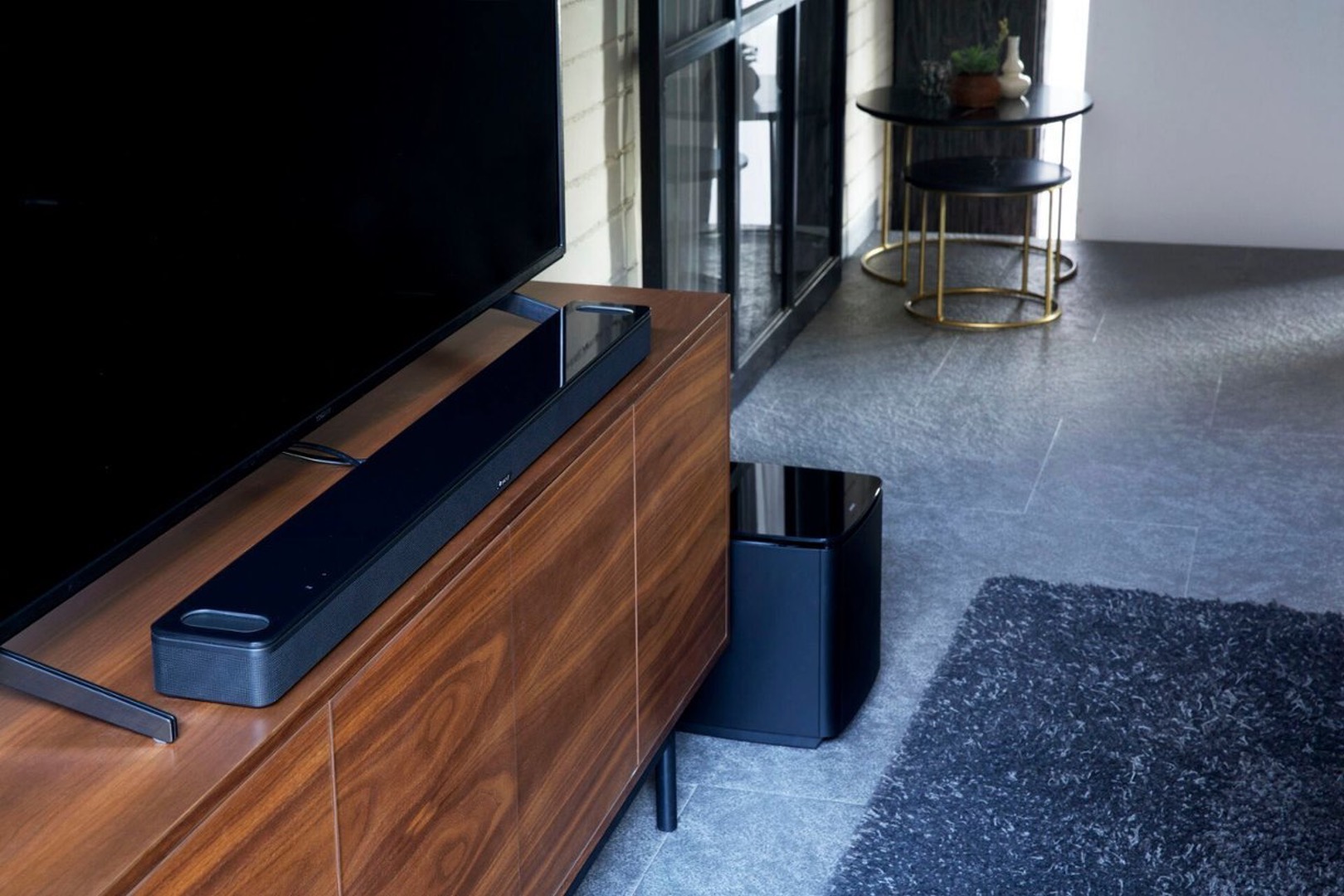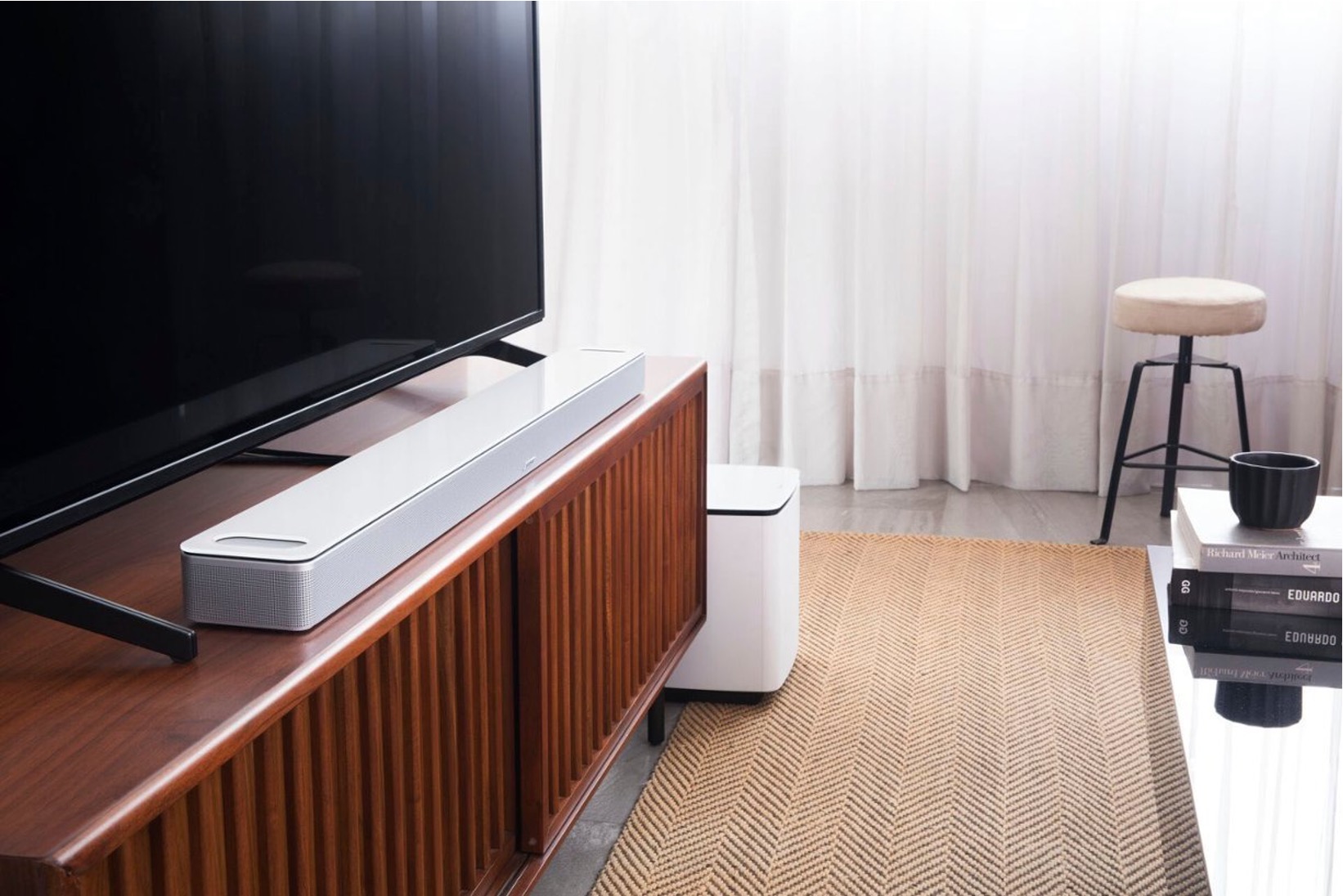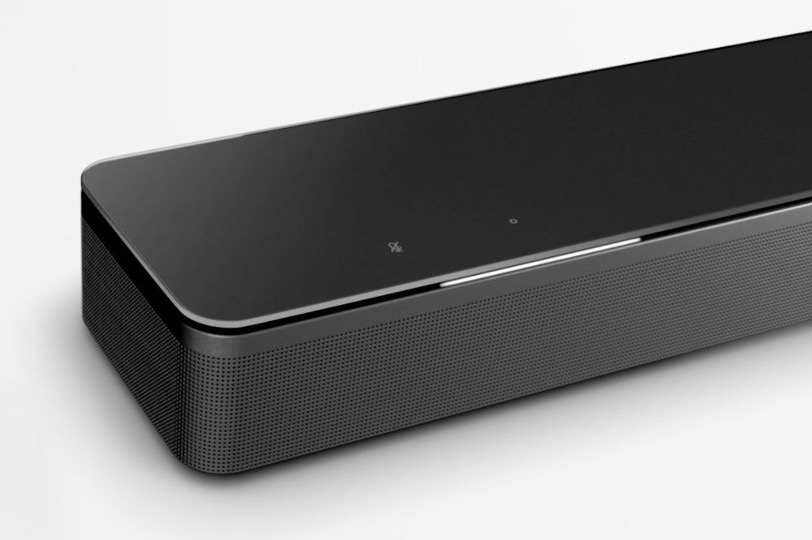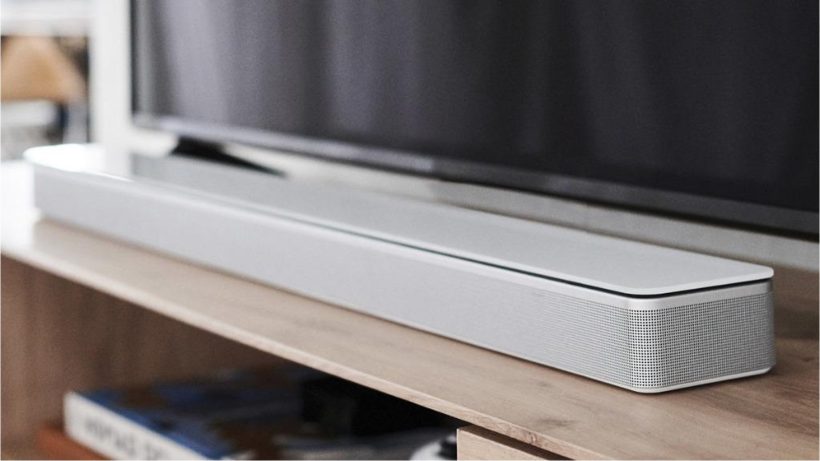The Bose Soundbar 700 series is essentially a 3.0 speaker configuration soundbar that delivers good stereo sound performance. The soundbar uses Bluetooth 4.2 for wireless music streaming, although it also supports Apple AirPlay 2 and Network (with Wi-Fi enabled) to play music directly from your TV. The soundbar also features Bose Voice4Video technology which allows you to control the soundbar and TV with voice commands, making it pretty convenient to setup. In terms of sound performance, the Bose 700 delivers really nice stereo sound with crisp highs and smooth midranges, but lacks support for Dolby Atmos and 3D sound effects.
In comparison, the Bose Soundbar 900 is currently the most advanced soundbar from Bose that supports uncompressed Dolby Atmos playback with HDMI eARC. This makes movies and TV shows feel extremely realistic with theatre-like sound performance, and you can really hear the spatial sound effects when using the Bose 900. The Bose 700 however can decode surround sound in Dolby Digital or DTS formats using optical connection, however, the output will be in stereo mode due to the Bose 700’s 3.0 speaker configuration (with left, center and right channels). This means that the Bose 900 can more accurately decode and play 5.1 sound with really nice spatial effects and surround sound performance.
Having said that, we felt that the bass on both the Bose 900 and Bose 700 somewhat lacking and they would definitely benefit from the addition of a dedicated subwoofer, such as the Bose Bass Module 700 which pairs seamlessly with the Bose 900 or 700 soundbars.

Comparing the Specs
| Specification | Bose Soundbar 700 | Bose Soundbar 900 |
|---|---|---|
| Connectivity Technology | Wired & Wireless | Wired & Wireless |
| Audio Formats | DTS, Dolby Digital | Dolby Atmos, Dolby Digital, Dolby Digital Plus, Dolby TrueHD |
| Sound Configuration | 3.0 (stereo) | 5.0.2 (surround sound) |
| Microphones | Built-in Microphone | Built-in Microphone |
| Sound Options | Multiroom, Rear Speakers (Optional), SimpleSync | Same as Bose 700 |
| Controls | Equalizer, In App Control, In App Volume Control, Microphone Off, Remote Control | Voice Assistant, In App Control, Adjustable EQ |
| Dimensions | 2.25″ H x 38.5″ W x 4.25″ D | 2.29″ H x 41.14″ W x 4.21″ D |
| Weight | 10.5 lb | 12.68 lbs |
| Wireless Connectivity | Apple AirPlay 2, Bluetooth, Network (WiFi Enabled), Wireless Connectivity | Bluetooth, Wi-Fi, Apple AirPlay 2, Chromecast, Spotify Connect |
| Bluetooth Version | 4.2 | 4.2 |
| Bluetooth Range | Up to 30 ft (9 m) | Up to 30 ft (9 m) |
| Bose App | Bose Music App | Bose Music App |
| Voice Assistant | Google Assistant (Built In), Alexa (Built In) | Alexa, Google Assistant |
| ADAPTiQ Audio Calibration | Yes | Yes |
| Number of Speakers | 5 (1 center tweeter, 2 tweeters on left/right) | 9 |
| HDMI ARC | Yes | Yes |
| Subwoofer | Optional (sold separately) | Optional (sold separately) |
| Remote Control Included | Yes | Yes |
Compared with the Bose soundbar 700, the Bose Soundbar 900 edges out with Dolby Atmos support, providing an immersive audio experience with realistic overhead sound effects. It features a higher number of speakers (nine in total) and supports wireless multi-room audio. Like the Soundbar 700, it offers Wi-Fi and Bluetooth connectivity and is compatible with Apple AirPlay 2 and Chromecast.
Sound Performance
In terms of sound performance, we felt that the Bose 900 delivers much more immersive sound with its 5.1 configuration. It also has slightly better bass than the Bose 700 – the Bose 700’s sound feels more “flat” and “neutral” by comparison, and has a more balanced frequency response as compared to the Bose 900’s warmer sound signature.
The Bose 900 delivers much more immersive sound performance with a 5.1 configuration – you can hear sound effects while watching movies with good realism and the soundstage is really wide. We also liked that the Bose 900 supports Dolby Atmos with TrueSpace spatial processing which gives extra depth to the overall sound especially for cinematic sequences. The surround sound impact that the Bose 900 delivers is much better than the Bose 700, and it can reproduce the sound as though it is coming from multiple directions. This makes movies much more entertaining to watch while using the Bose 900 speaker.
Having said that, we felt that both the Bose 700 and Bose 900 performed equally well when listening to music, and you can hear the separation between the right and left channels very clearly in the Bose 700 soundbar. Both soundbars handle dialogues and speech really well with the built-in center channel speaker, and you can watch TV shows and get crystal clear vocals. We would say that the main difference between the Bose 700 and 900 is that the Bose 900 provides better 3D spatial imaging and sound effects with Dolby Atmos. In terms of loudness, both soundbars can get really loud and clear and they do not distort even at 90% volume level.
If you are looking to get a soundbar to enjoy movies and 3D sound effects, the Bose 900 is definitely the better option here due to its 5.1 configuration and Dolby Atmos support. Both soundbars do not deliver as much bass as we expected, and they would definitely benefit from the addition of a dedicated subwoofer to the entire system such as the Bass Module 700.

Specs
In terms of specs, the Bose 900 soundbar definitely comes with more updated specs with support for Dolby Atmos decoding. The Bose 900 features a 5.0.2 channel configuration with a ported enclosure, and comes with 1 front tweeter, 4 front drivers and 2 upward drivers (a total of 7 drivers) that delivers immersive surround sound performance. The Bose 900 supports HDMI ARC or optical TOSLINK, and supports AirPlay 2 with Chromecast built-in.
The Bose 700 soundbar, by contrast, comes with four mid-range drivers with two drivers on each side of the soundbar. It also comes with a center tweeter that delivers clean vocals. Due to the Bose 700 soundbar’s configuration, this soundbar is suited to deliver stereo sound performance with good separation between the right and left channels. The Bose 700 soundbar also uses Bluetooth 4.2 which is a rather outdated Bluetooth version.
In terms of setup, both the Bose 700 and Bose 900 soundbar can be easily setup with no difficulty and they can connect automatically to your TV box via HDMI or optical. However, we felt that the Bose 900 was much more convenient to use with its voice control feature – you can control the TV and the soundbar with its built-in voice assistants.

The Verdict?
We preferred the Bose 900 soundbar to the Bose 700 due to its surround sound configuration and support for Dolby Atmos. While the Bose 700 delivers reasonably good sound performance in stereo mode, it converts a 5.1 surround sound signal into stereo which means that movies will not sound as dynamic and lifelike as they would, and sound effects will not have that much depth. The Bose 900 by contrast supports 5.0.1 channels and delivers really good sound effects with surround sound separation, allowing you to hear where each sound is coming from with 3D spatial imaging. Unlike the Bose 700 soundbar, the Bose 900 is also equipped with two custom upward facing speaker drivers which make the sound feel like it is coming from every direction or overhead. Both the Bose 900 and 700 delivers really clean sound performance with good midrange and crystal clear highs, however they both somewhat lack bass in the lower-frequency ranges and we recommend adding Bose Bass Module 700 for an extra bass kick for a better home theater experience.

